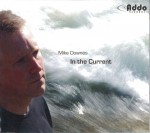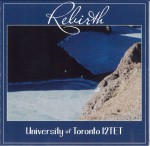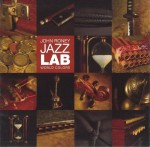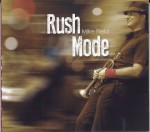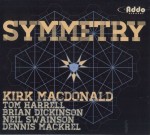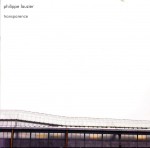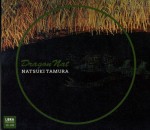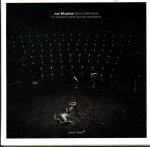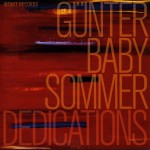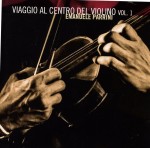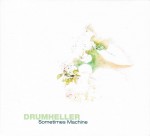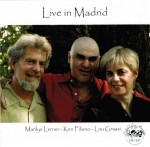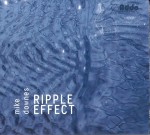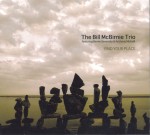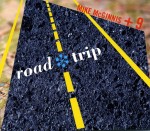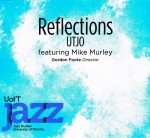Exceptional CDs You May
Not Know About
As mass media continues to promote music as another instantly consumed product, the likelihood of new sounds — or even older ones — being ignored because they don’t fit the style of the moment intensifies. This is especially true when it comes to improvised music. But with the holiday season looming, more committed listeners may be seeking gifts for those who appreciate challenge rather than comfort in their music. Here are some CDs from 2013 that fit the bill. They include ones by established players, younger stylists plus important reissues.
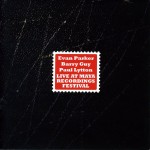 Anyone who claims that experimental music lacks emotion must hear Evan Parker/Barry Guy/Paul Lytton Live at Maya Recordings Festival (NoBusiness NBCD 55 nobusinessrecords.com). A working trio since 1980, tenor saxophonist Parker, bassist Guy and drummer Lytton invigorate this live set with the combination of precision and passion reminiscent of the most accomplished string quartet performance. Even when he isn’t displaying his characteristic circular-breathed multiphonics, Parker is able to prod showpieces like “Obsidian” and “Gabbro” to slow-boiling intensity. Furthermore his instantly identifiable sound can be relaxed without sacrificing emotion. The bassist’s supple finger movements transcend timekeeping with guitar-like facility below the bridge and other extremities, while Lytton’s shuffles and timed rimshots oppose or connect with either or both of the others’ timbres for maximum satisfying cohesion.
Anyone who claims that experimental music lacks emotion must hear Evan Parker/Barry Guy/Paul Lytton Live at Maya Recordings Festival (NoBusiness NBCD 55 nobusinessrecords.com). A working trio since 1980, tenor saxophonist Parker, bassist Guy and drummer Lytton invigorate this live set with the combination of precision and passion reminiscent of the most accomplished string quartet performance. Even when he isn’t displaying his characteristic circular-breathed multiphonics, Parker is able to prod showpieces like “Obsidian” and “Gabbro” to slow-boiling intensity. Furthermore his instantly identifiable sound can be relaxed without sacrificing emotion. The bassist’s supple finger movements transcend timekeeping with guitar-like facility below the bridge and other extremities, while Lytton’s shuffles and timed rimshots oppose or connect with either or both of the others’ timbres for maximum satisfying cohesion.
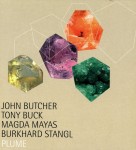 A decade younger than Parker, John Butcher has refined extended saxophone techniques further. Paired with drummer Tony Buck and either guitarist Burkhard Stangl or pianist Magda Mayas, Plume (Unsounds 35 Uunsounds.com) demonstrates that even when stripped of beat and melody unmatched vibrancy remains. Although guitar strums and drum resonance satisfactorily complement Butcher’s narratives which replicate bird chirps and pinched reed sucking, it’s “Vellum,” the piano/drum/sax interface, that’s the stunner. As Buck roughly strokes drum tops to equate cicada-like textures or subtle accents with bell-tree shakes, Mayas’ stopped piano keys and internal string plucks provide a sinewy challenge to Butcher’s klaxon-like tones. When the piano soundboard shakes and string vibrations intensify excitement, the saxophonist responds with amplified growls and snorts and the drummer with heartbeat-like thumps. Moving forward chromatically, the mood is intensified with an undercurrent of restrained power. Finally as Mayas’ rummaging in the piano’s innards gives way to pummelling strokes and Butcher’s tongue slaps are replaced by violent staccato trills, parallel release is achieved.
A decade younger than Parker, John Butcher has refined extended saxophone techniques further. Paired with drummer Tony Buck and either guitarist Burkhard Stangl or pianist Magda Mayas, Plume (Unsounds 35 Uunsounds.com) demonstrates that even when stripped of beat and melody unmatched vibrancy remains. Although guitar strums and drum resonance satisfactorily complement Butcher’s narratives which replicate bird chirps and pinched reed sucking, it’s “Vellum,” the piano/drum/sax interface, that’s the stunner. As Buck roughly strokes drum tops to equate cicada-like textures or subtle accents with bell-tree shakes, Mayas’ stopped piano keys and internal string plucks provide a sinewy challenge to Butcher’s klaxon-like tones. When the piano soundboard shakes and string vibrations intensify excitement, the saxophonist responds with amplified growls and snorts and the drummer with heartbeat-like thumps. Moving forward chromatically, the mood is intensified with an undercurrent of restrained power. Finally as Mayas’ rummaging in the piano’s innards gives way to pummelling strokes and Butcher’s tongue slaps are replaced by violent staccato trills, parallel release is achieved.
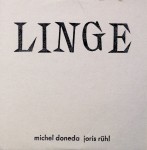 Then same age as Butcher, French soprano saxophonist Michel Doneda has also refined and extended Parker’s tonal experiments. Linge (Umlaut Records umfrcd 07 umlautrecords.com) was recorded in an old barn in Eastern France to organically maximize the spatial properties during his duet with clarinetist Joris Rühl (b.1982). As they work their way through seven sequences, what’s produced are distinctive improvisations that are as frequently created from parallel blowing as intermingled timbres. Concentrated in the highest register of the sound spectrum an amazing multiplicity of tones is still heard. Manipulating air currents as much as reed and key properties, the two attain such a harmonic level that there are points where the sounds are identical to those of a boys’ choir. Other times masticating reed- and tongue-popping extrusions produce a cubist-like perspective. Staccato chirps, flatline blowing and gravelly motions are all present. Only on the penultimate track are individual traits identifiable as Doneda concentrates on split-tone buzzing and Rühl on lyrical and communicative textures.
Then same age as Butcher, French soprano saxophonist Michel Doneda has also refined and extended Parker’s tonal experiments. Linge (Umlaut Records umfrcd 07 umlautrecords.com) was recorded in an old barn in Eastern France to organically maximize the spatial properties during his duet with clarinetist Joris Rühl (b.1982). As they work their way through seven sequences, what’s produced are distinctive improvisations that are as frequently created from parallel blowing as intermingled timbres. Concentrated in the highest register of the sound spectrum an amazing multiplicity of tones is still heard. Manipulating air currents as much as reed and key properties, the two attain such a harmonic level that there are points where the sounds are identical to those of a boys’ choir. Other times masticating reed- and tongue-popping extrusions produce a cubist-like perspective. Staccato chirps, flatline blowing and gravelly motions are all present. Only on the penultimate track are individual traits identifiable as Doneda concentrates on split-tone buzzing and Rühl on lyrical and communicative textures.
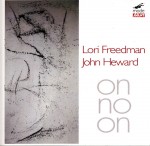 Another reed experimenter is Montreal-based clarinetist Lori Freedman, whose seven improvisations on On No On (Mode Avant 16 moderecords.com) are with percussionist John Heward. Related to the cerebral texture and timbre experiments of Butcher/Buck or Parker/Lytton, there’s no chordal instrument present to smooth the interface. The chief pleasure of these tracks is noting the substance of Freedman’s reed flurries and the strategies Heward pulls from his kit to parry her thrusts. Using his palms as often as sticks, Heward’s whacks or rolls are singular replies to the reed solos which frequently extend like run-on sentences, adding violent or narrowed projections to make a point. Marimba-like reverberations are called into play on those rare occasions when Freedman’s output turns legato. Overall while technical prowess is the point, by the final “Improvisation 7,” the narrative turns from squeaks and shudders to an almost jaunty melodiousness.
Another reed experimenter is Montreal-based clarinetist Lori Freedman, whose seven improvisations on On No On (Mode Avant 16 moderecords.com) are with percussionist John Heward. Related to the cerebral texture and timbre experiments of Butcher/Buck or Parker/Lytton, there’s no chordal instrument present to smooth the interface. The chief pleasure of these tracks is noting the substance of Freedman’s reed flurries and the strategies Heward pulls from his kit to parry her thrusts. Using his palms as often as sticks, Heward’s whacks or rolls are singular replies to the reed solos which frequently extend like run-on sentences, adding violent or narrowed projections to make a point. Marimba-like reverberations are called into play on those rare occasions when Freedman’s output turns legato. Overall while technical prowess is the point, by the final “Improvisation 7,” the narrative turns from squeaks and shudders to an almost jaunty melodiousness.
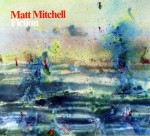 This sort of intense improvising also involves the piano, as Philadelphia’s Matt Mitchell proves with Fiction (Pi Recordings PI 50 pirecordings.com). Mitchell’s approach is linear as well as forceful, and with the help of Ches Smith, who plays drums, percussion and vibraphone, the 15 tracks showcase a rapprochement between cerebral improvisation and the power of rock-influenced beats. Coming across like a super-powered mixture of Earl Hines and Cecil Taylor, Mitchell’s slashing lines show that he has a thorough grounding in contemporary jazz pianism, yet can slither note clusters into the furthest nooks of the keyboard if need be. On a track like “Dadaist Flu” he appears to output separate lines with either hand; while others, like “Veins” paste abstraction onto the song form. The extended “Action Field” is a microcosm of his work, shaped like an intermezzo yet with the same intensity in pacing as the rest of the CD. If Mitchell’s playing is sometimes overwhelming and pressured, he’ll likely soon learn to moderate his gifts. He was born in 1975.
This sort of intense improvising also involves the piano, as Philadelphia’s Matt Mitchell proves with Fiction (Pi Recordings PI 50 pirecordings.com). Mitchell’s approach is linear as well as forceful, and with the help of Ches Smith, who plays drums, percussion and vibraphone, the 15 tracks showcase a rapprochement between cerebral improvisation and the power of rock-influenced beats. Coming across like a super-powered mixture of Earl Hines and Cecil Taylor, Mitchell’s slashing lines show that he has a thorough grounding in contemporary jazz pianism, yet can slither note clusters into the furthest nooks of the keyboard if need be. On a track like “Dadaist Flu” he appears to output separate lines with either hand; while others, like “Veins” paste abstraction onto the song form. The extended “Action Field” is a microcosm of his work, shaped like an intermezzo yet with the same intensity in pacing as the rest of the CD. If Mitchell’s playing is sometimes overwhelming and pressured, he’ll likely soon learn to moderate his gifts. He was born in 1975.
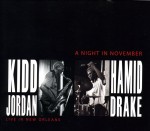 Still, age makes little difference in creating exceptional music. No better proof is A Night in November Live in New Orleans (Valid Records VR-1015 validrecords.com), featuring Chicago drummer Hamid Drake, 20 years Mitchell’s senior, and Big Easy saxophonist Kidd Jordan (b.1935). Indefatigable in his solos and with the energy of players one-third his age, the saxophonist is familiar enough with the tradition to deconstruct it at will, as he demonstrates on “Wade in the Water.” At the same time, as someone who has been probing music’s limits since the 1960s Jordan can whip any timbres into a cohesive whole with equal emphasis on brain and heart. Take the tracks from “Tenor and Drums.” As Drake matches his narrative with cymbal clanks and drum bumps, Jordan outputs two theme variations, one moderato and flowing, the other quirky and altissimo. Rather than upsetting a consistent narrative, he then constructs a new exposition from shrill tones.
Still, age makes little difference in creating exceptional music. No better proof is A Night in November Live in New Orleans (Valid Records VR-1015 validrecords.com), featuring Chicago drummer Hamid Drake, 20 years Mitchell’s senior, and Big Easy saxophonist Kidd Jordan (b.1935). Indefatigable in his solos and with the energy of players one-third his age, the saxophonist is familiar enough with the tradition to deconstruct it at will, as he demonstrates on “Wade in the Water.” At the same time, as someone who has been probing music’s limits since the 1960s Jordan can whip any timbres into a cohesive whole with equal emphasis on brain and heart. Take the tracks from “Tenor and Drums.” As Drake matches his narrative with cymbal clanks and drum bumps, Jordan outputs two theme variations, one moderato and flowing, the other quirky and altissimo. Rather than upsetting a consistent narrative, he then constructs a new exposition from shrill tones.
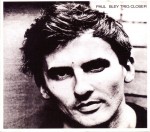 Free-form improvisation can be understated and subtle as well as loud. The pianist who initially melded song form and abstraction was Montreal-born Paul Bley as the classic 1965 Closer (ESP-Disk ESP 1021 espdisk.com) demonstrates. Newly remastered, the reissue displays with more clarity the pianist’s cleverly shaped and precisely accented tones, Barry Altschul’s nuanced drum accompaniment and the barely there strokes from Steve Swallow’s bass. One marvel is how the pieces are succinctly defined whether from the burrowing keyboard runs and rat-tat-tat drums that advance “Batterie” or from each instrument’s perfect balance on “Ida Lupino.” A factoid: In addition to “Ida Lupino” Bley’s then-wife Carla Bley wrote six of the remaining nine tracks; his next wife, Annette Peacock, wrote the album’s final track, “Cartoon.”
Free-form improvisation can be understated and subtle as well as loud. The pianist who initially melded song form and abstraction was Montreal-born Paul Bley as the classic 1965 Closer (ESP-Disk ESP 1021 espdisk.com) demonstrates. Newly remastered, the reissue displays with more clarity the pianist’s cleverly shaped and precisely accented tones, Barry Altschul’s nuanced drum accompaniment and the barely there strokes from Steve Swallow’s bass. One marvel is how the pieces are succinctly defined whether from the burrowing keyboard runs and rat-tat-tat drums that advance “Batterie” or from each instrument’s perfect balance on “Ida Lupino.” A factoid: In addition to “Ida Lupino” Bley’s then-wife Carla Bley wrote six of the remaining nine tracks; his next wife, Annette Peacock, wrote the album’s final track, “Cartoon.”
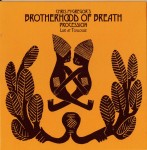 More than tripling the number of players and recorded in 1977, another reissue, Chris McGregor’s Brotherhood of Breath Procession: Live at Toulouse (Ogun OGCD 40 ogunrecords@googlemail.com) celebrates an 11-piece band that excitedly added world music currents to advanced jazz. That because the group was split between self-exiled South Africans and experimenting British improvisers. Expanded with three new tracks, this CD includes Evan Parker among the saxes, but the impassioned ballad playing and booming rugged vibrations he and alto saxophonists Mike Osborne and Dudu Pukwana play are in a different sonic zone. Swaying with Africanized rhythms tracks like “You Ain’t Gonna Know Me”… and “Kwhalo” are a delight. Plus the craftiness of the arrangements is such that sounds are both lilting and grounded in technical mastery. Adding just the bare minimum of notes to direct the band like a Cape Town Count Basie, McGregor, plus bassists Johnny Dyanni and Harry Miller plus drummer Louis Moholo – South Africans all – effortlessly induce the beat. But at the same time stimulating horn vamps pull back enough so that notable chases between trumpet triplets and slippery reed extensions are clearly heard.
More than tripling the number of players and recorded in 1977, another reissue, Chris McGregor’s Brotherhood of Breath Procession: Live at Toulouse (Ogun OGCD 40 ogunrecords@googlemail.com) celebrates an 11-piece band that excitedly added world music currents to advanced jazz. That because the group was split between self-exiled South Africans and experimenting British improvisers. Expanded with three new tracks, this CD includes Evan Parker among the saxes, but the impassioned ballad playing and booming rugged vibrations he and alto saxophonists Mike Osborne and Dudu Pukwana play are in a different sonic zone. Swaying with Africanized rhythms tracks like “You Ain’t Gonna Know Me”… and “Kwhalo” are a delight. Plus the craftiness of the arrangements is such that sounds are both lilting and grounded in technical mastery. Adding just the bare minimum of notes to direct the band like a Cape Town Count Basie, McGregor, plus bassists Johnny Dyanni and Harry Miller plus drummer Louis Moholo – South Africans all – effortlessly induce the beat. But at the same time stimulating horn vamps pull back enough so that notable chases between trumpet triplets and slippery reed extensions are clearly heard.
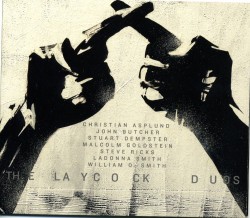 The Laycock Duos
The Laycock Duos

